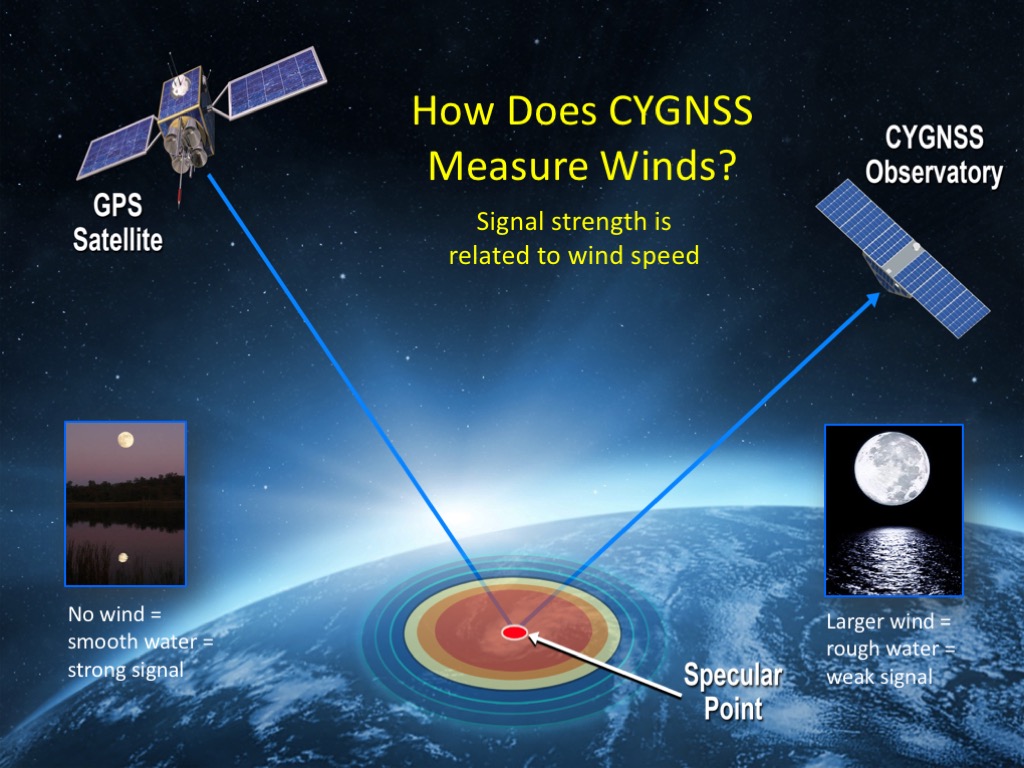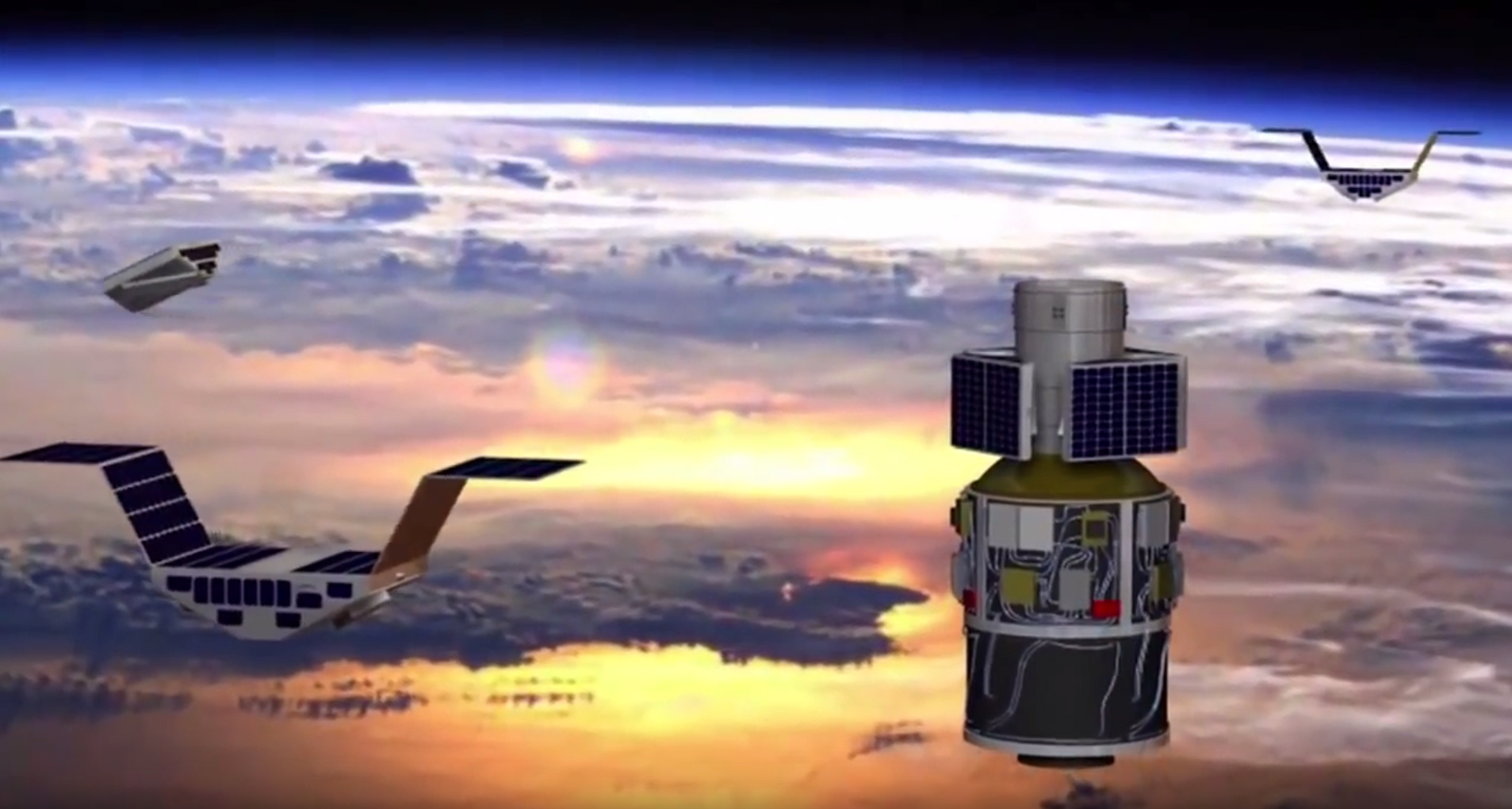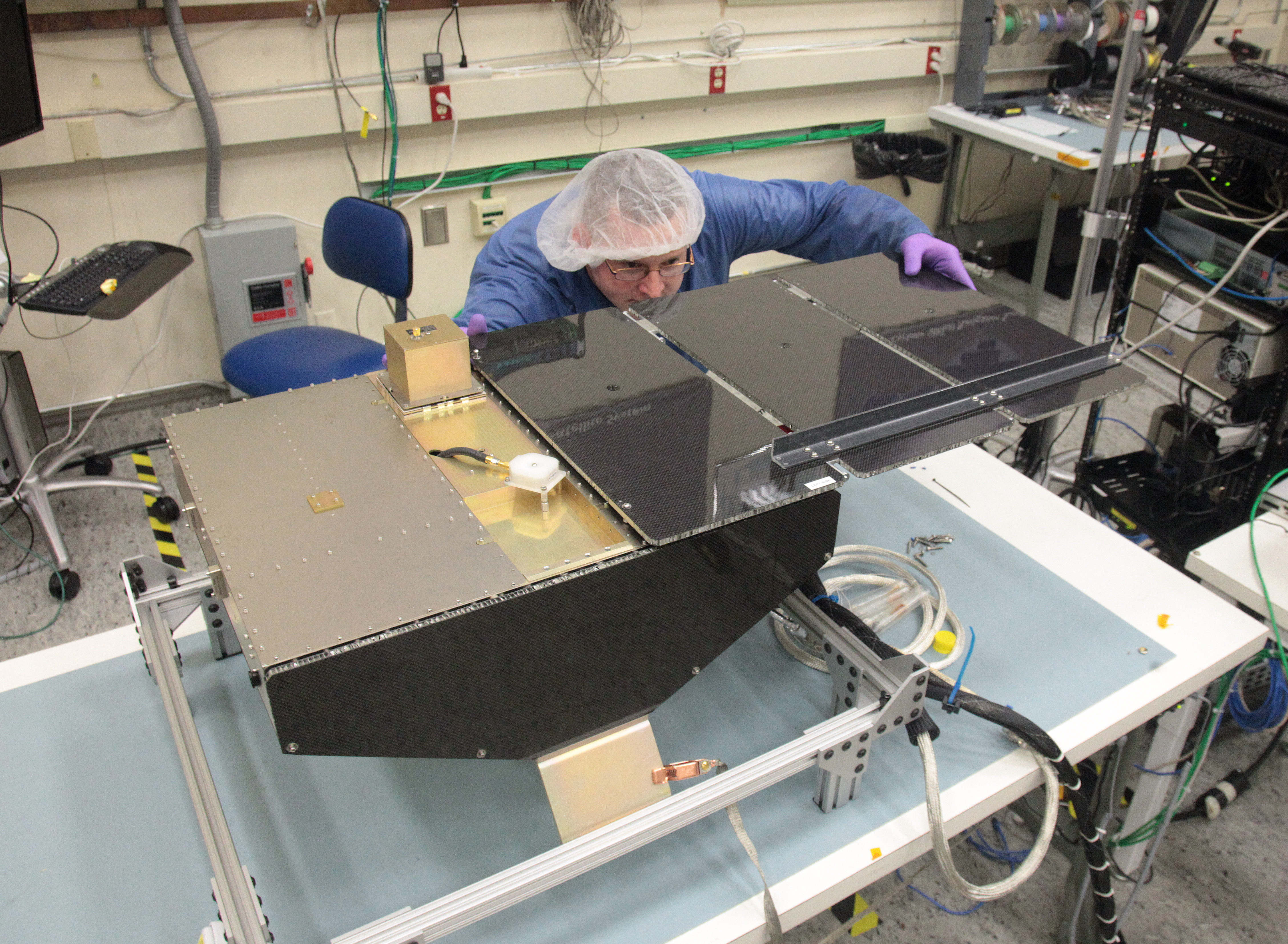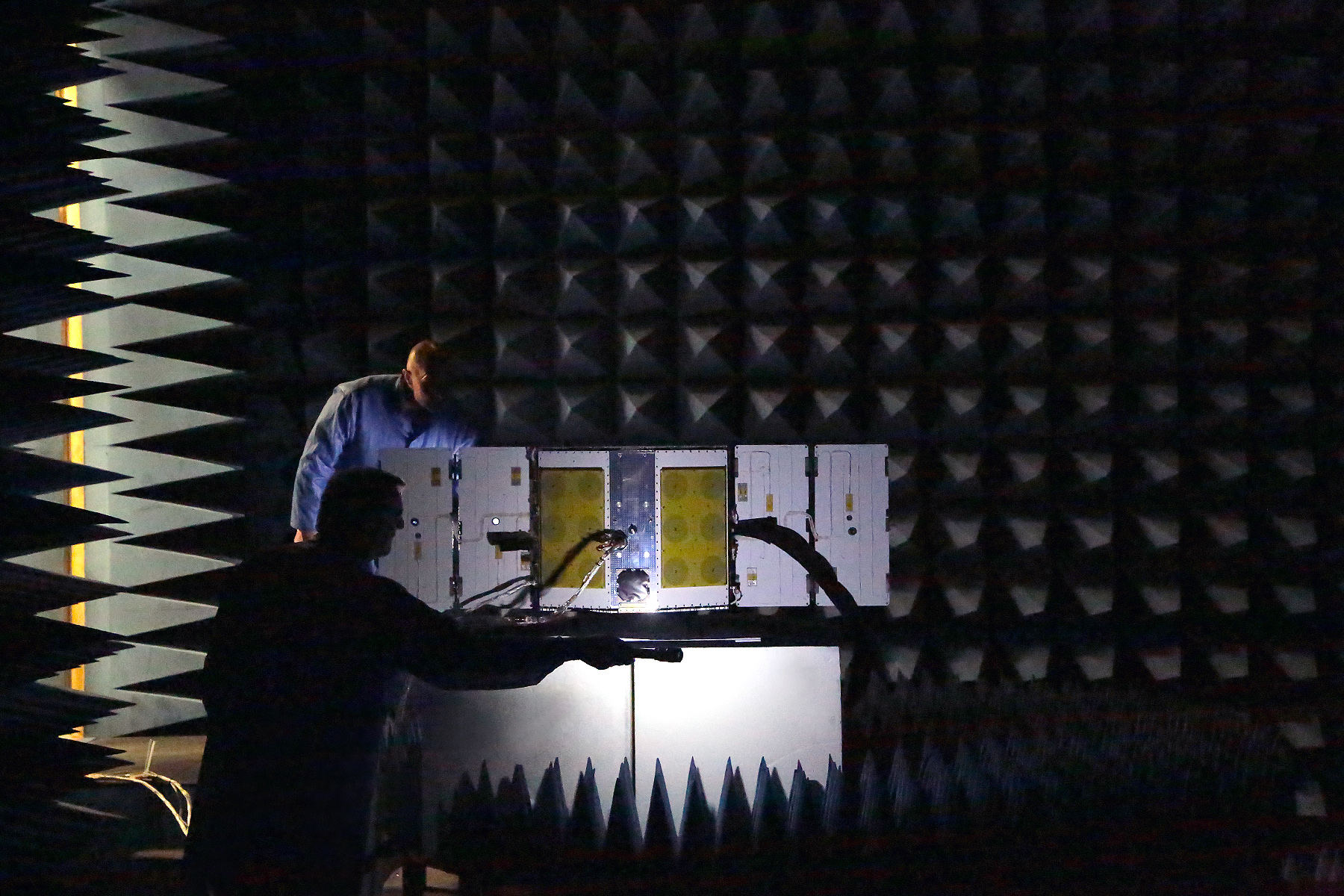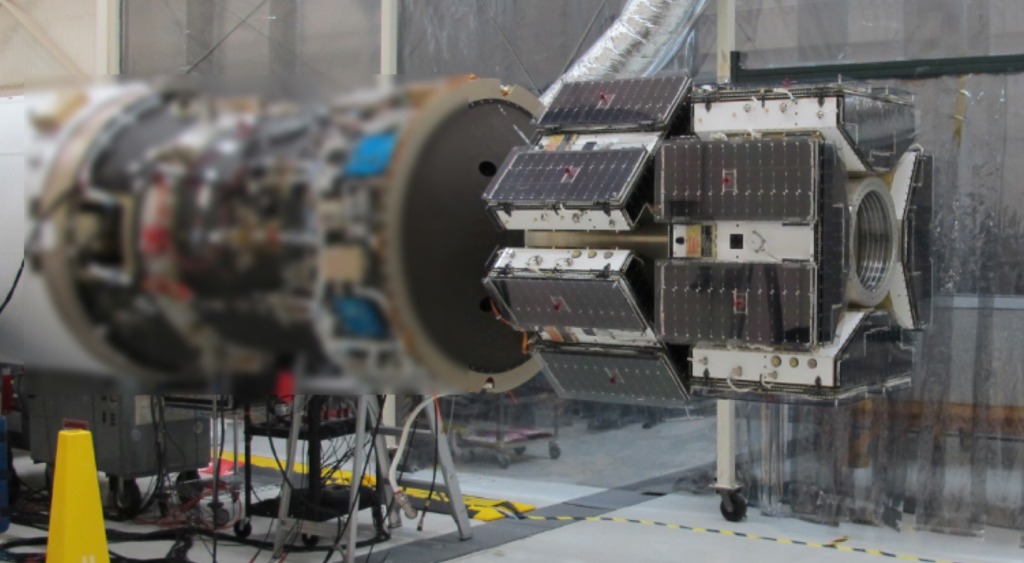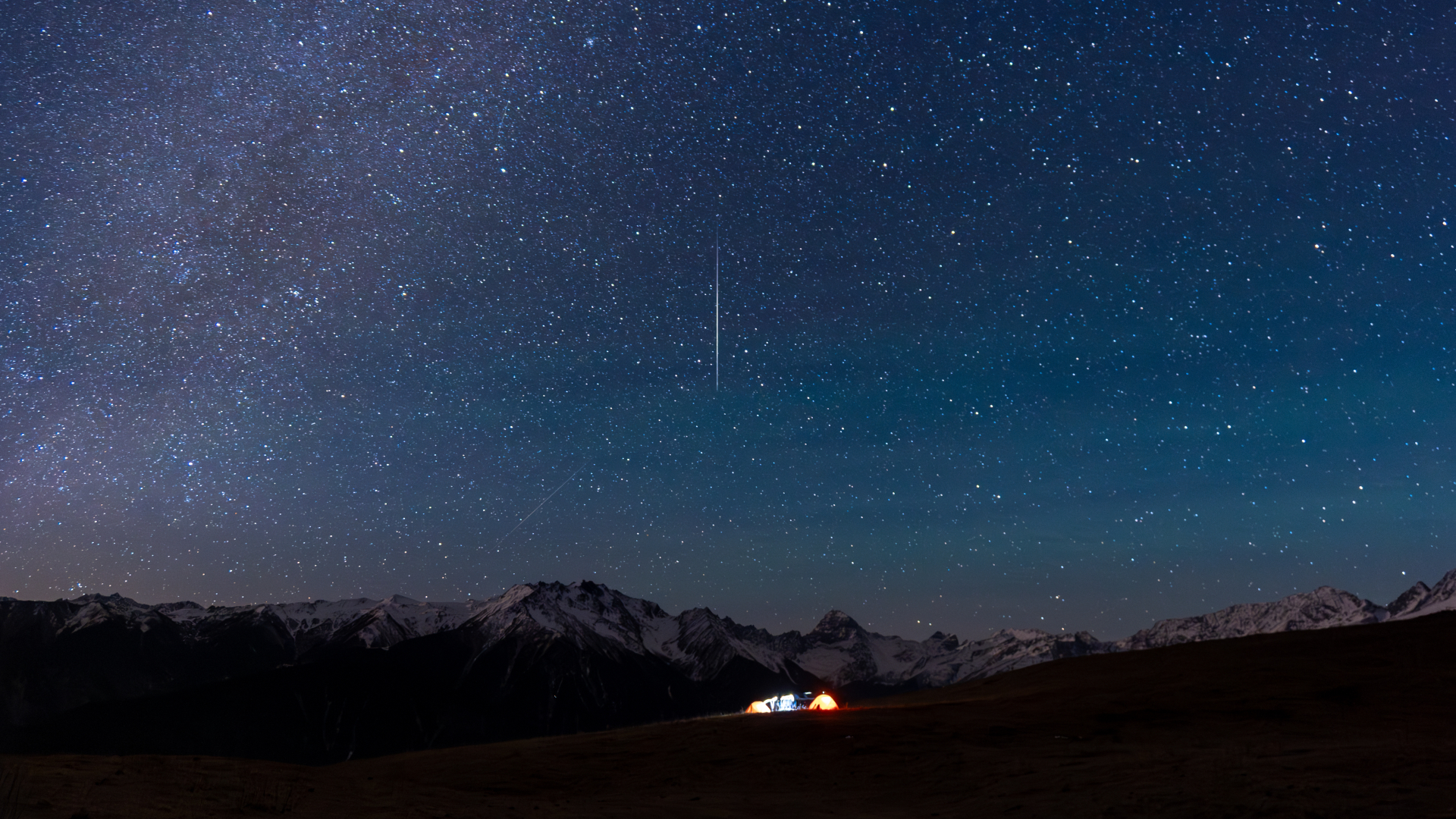NASA's CYGNSS Hurricane-Tracking Satellites in Pictures
Cyclone Global Navigation Satellite System
This is an artist's concept of one of NASA's Cyclone Global Navigation Satellite System (CYGNSS) satellites orbiting Earth above a hurricane. Eight identical satellites the size of a microwave oven will fly in formation to monitor winds above the ocean.
How Does CYGNSS Measure Winds
To measure the wind, CYGNSS satellites rely on GPS signals. Other GPS satellites beam signals down to Earth, and the CYGNSS satellites point their GPS receivers at the ocean to observe the signal as it reflects off of the water. The quality or strength of this reflected signal reveals how windy — or stormy — a particular region is at the time.
CYGNSS In Space
NASA's eight Cyclone Global Navigation Satellite System (CYGNSS) microsatellites will launch and deploy Dec. 12, 2016, to study the evolution of hurricanes and cyclones in Earth's tropical hurricane belt.
Hurricane Trackers
CYGNSS satellites will monitor the most hurricane-prone regions of the Earth. Top panel: Historical storm tracks. Bottom left panel: CYGNSS measurements from one orbit over 1.5 hours. Bottom right panel: CYGNSS measurements from 15 orbits over 24 hours.
CYGNSS Construction
Southwest Research Institute engineers and technicians built an engineering model of the CYGNSS microsatellite in May 2015.
Solar Panels Installed
A technician at the Southwest Research Institute installs solar panels on a CYGNSS spacecraft on Feb. 4, 2016.
Deployment Test
Deployment test of the solar panels on the first completed CYGNSS microsatellite, Feb. 4, 2016, at the Southwest Research Institute in San Antonio, Texas.
Breaking space news, the latest updates on rocket launches, skywatching events and more!
Environmental Testing
Four of the eight Cyclone Global Navigation Satellite System microsatellites undergo thermal vacuum testing at the Southwest Research Institute (SwRI) in San Antonio, Texas. These tests will simulate the vacuum, vibration and extreme temperatures that CYGNSS microsatellites will endure during their time in space.
Radio Frequency Anechoic Chamber Testing
A CYGNSS microsatellite is placed in a radio frequency anechoic chamber at the Southwest Research Institute in San Antonio, Texas. NASA performed these types of tests throughout the summer of 2016 to evaluate the radio frequency interference between the many sensitive instruments on the spacecraft.
Shaken Up: Vibration Testing
Engineers prepare the eight CYGNSS microsatellites, mounted on the deployment module, for vibration testing at the Southwest Research Institute in San Antonio, Texas. These tests will simulate the conditions that the microsatellites will face during the launch into space.
Eight CYGNSS on Pegasus rocket
All eight CYGNSS observatories prepped for launch on the Pegasus rocket. Launch is currently scheduled for Dec. 12, 2016 from Cape Canaveral, Florida.

Hanneke Weitering is a multimedia journalist in the Pacific Northwest reporting on the future of aviation at FutureFlight.aero and Aviation International News and was previously the Editor for Spaceflight and Astronomy news here at Space.com. As an editor with over 10 years of experience in science journalism she has previously written for Scholastic Classroom Magazines, MedPage Today and The Joint Institute for Computational Sciences at Oak Ridge National Laboratory. After studying physics at the University of Tennessee in her hometown of Knoxville, she earned her graduate degree in Science, Health and Environmental Reporting (SHERP) from New York University. Hanneke joined the Space.com team in 2016 as a staff writer and producer, covering topics including spaceflight and astronomy. She currently lives in Seattle, home of the Space Needle, with her cat and two snakes. In her spare time, Hanneke enjoys exploring the Rocky Mountains, basking in nature and looking for dark skies to gaze at the cosmos.

